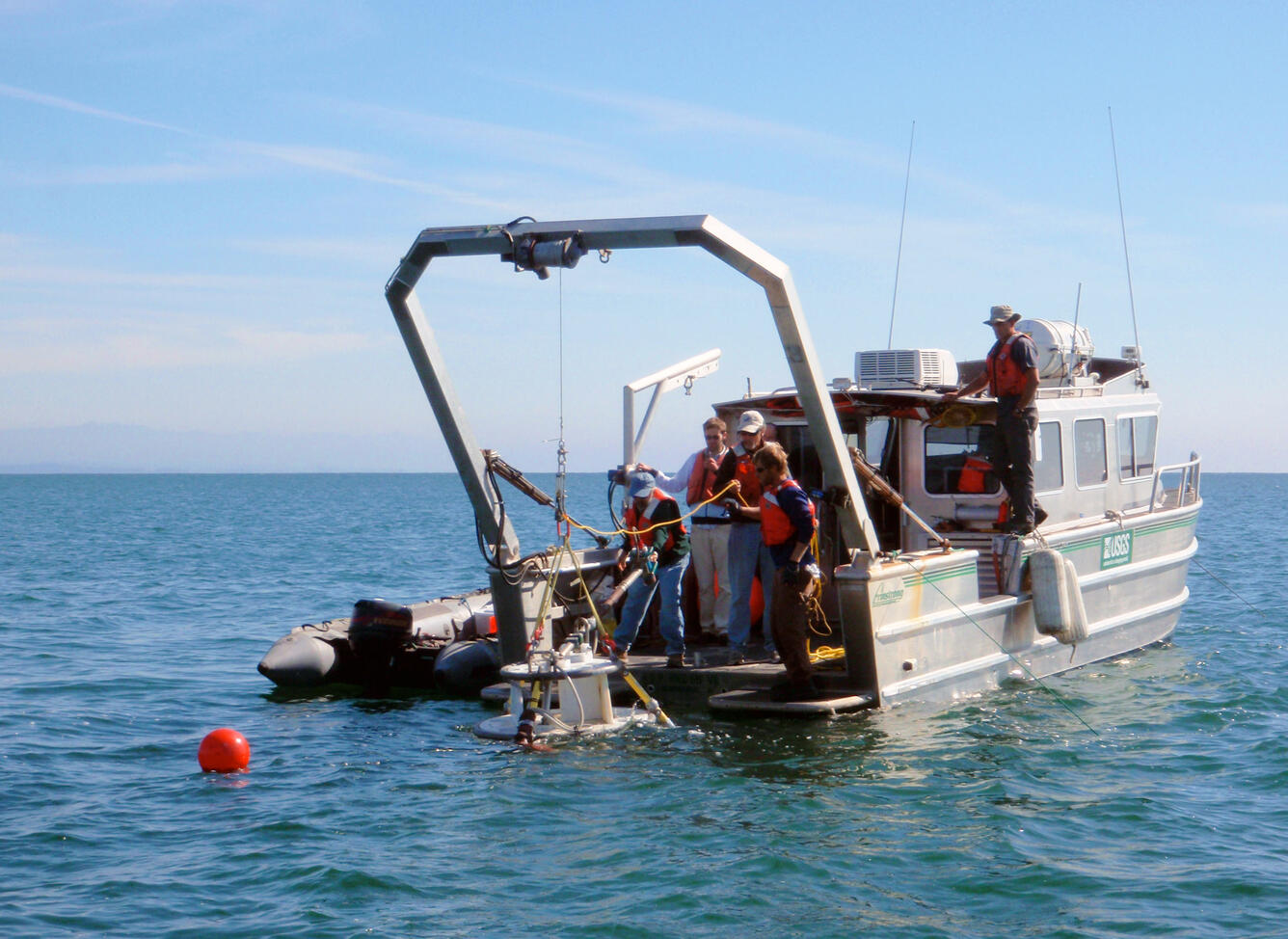Patent Awarded to USGS Scientists for Underwater Microscope System
U.S. patent 6,680,795
U.S. Geological Survey (USGS) scientists Henry Chezar and David Rubin (USGS Pacific Coastal and Marine Science Center) have been awarded U.S. patent 6,680,795 for their Underwater Microscope System, also known as the "Eyeball." Dated January 20, 2004, the patent abstract reads "An apparatus and a method are provided for capturing and analyzing video images of sediment from the bottom of a body of water such as a river or sea. The apparatus includes a video imager with a close-up focus of lens adapted to collect images of sediment at the bottom of the body of water. A waterproof housing surrounds the video imager. The video images are analyzed using any appropriate algorithm to determine grain size."
As noted by Dave Rubin in a recent article in the Journal of Sedimentary Research (2004, volume 74, issue 1), using the Eyeball for grain-size analysis has several advantages over using traditional laboratory techniques: it is 100 times faster, it is ideal for sampling surficial sediment (the part that interacts with a flow), it can determine vertical profiles in grain size on a scale finer than can be sampled physically, and it can be used in the field to provide near-real-time grain-size analysis.






